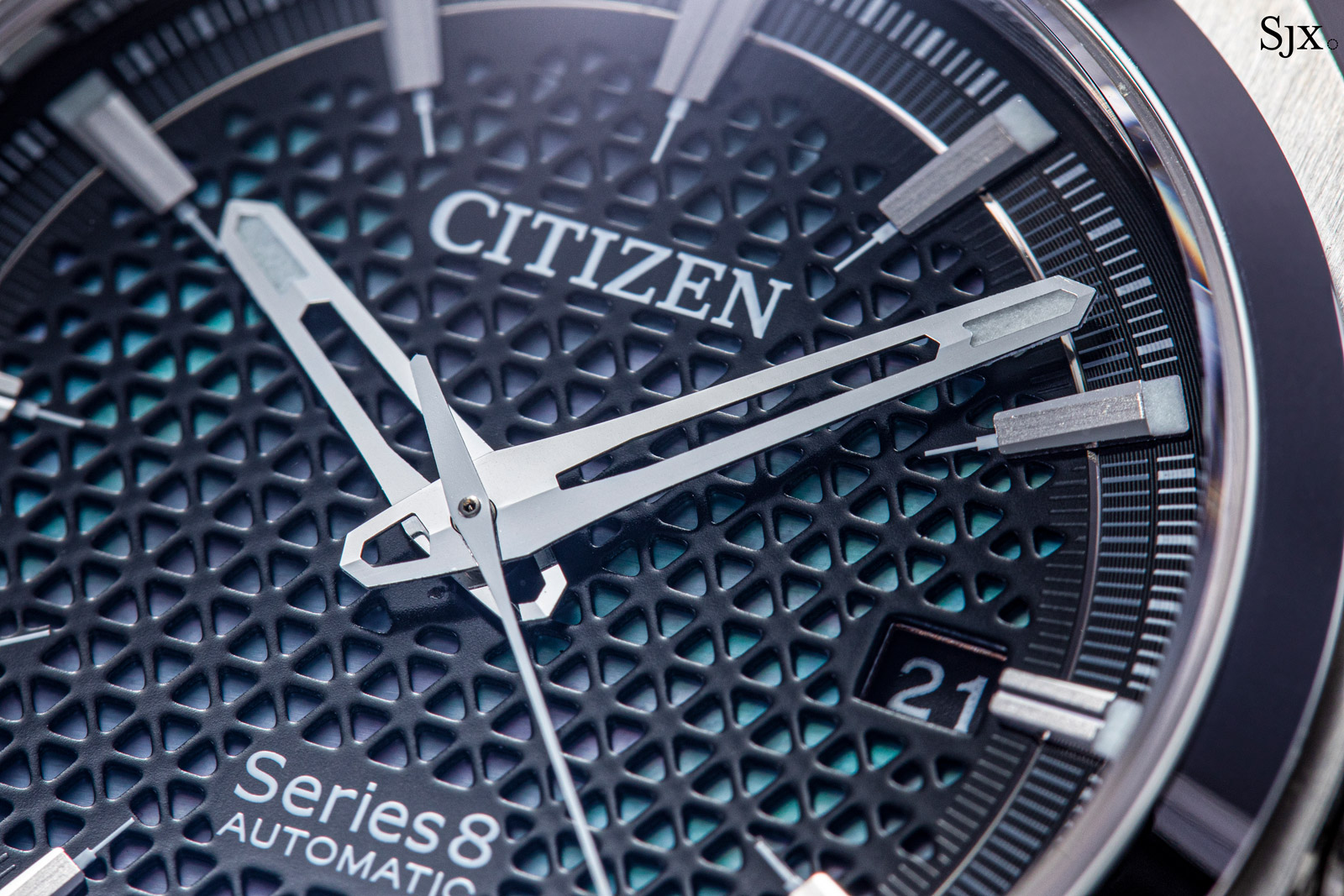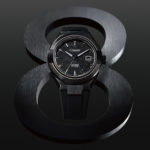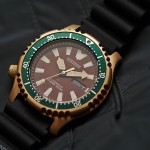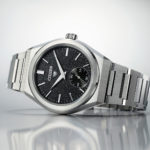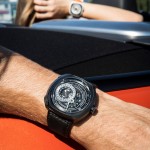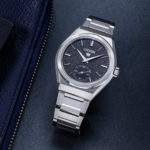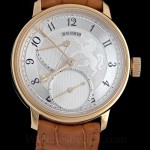Up Close: Citizen Series 8 Automatic
A value winner.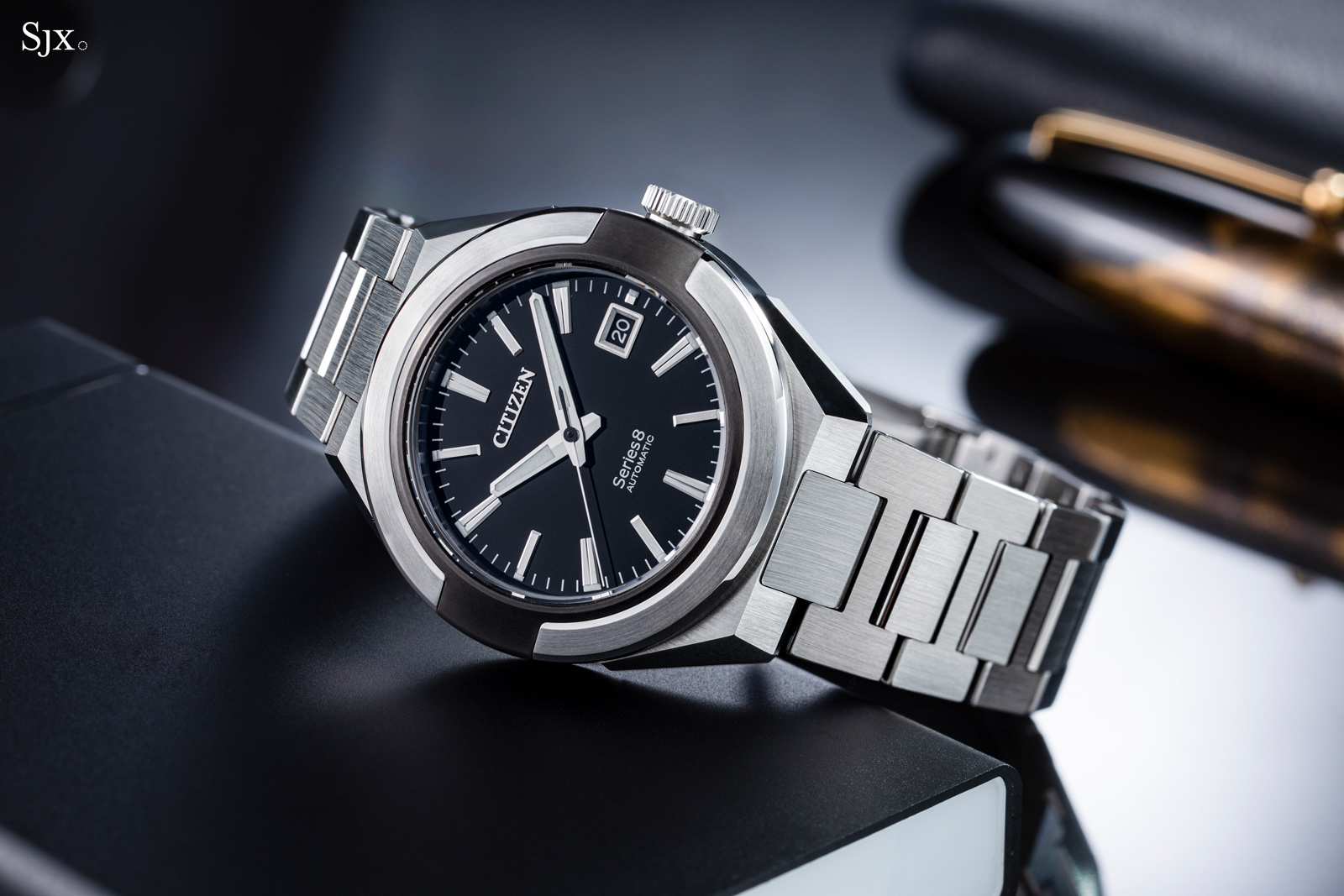
I was impressed by the Caliber 0200 that Citizen unveiled earlier in the year. A new design with an integrated bracelet and an automatic movement developed from scratch, the Caliber 0200 costs US$6,000 – more than the typical Citizen – it is unquestionably a value proposition. The level of fit and finish, especially on the case and bracelet, surpasses practically everything else at that price.
Still, US$6,000 is not affordable for everyone. Citizen soon followed up with the Series 8, a line of watches similar to the Caliber 0200 in style but far more accessible price-wise, with the base model starting at US$1,200. Like the Caliber 0200, the Series 8 outperforms in its far lower price segment.
The Series 8 is made up of three models – 830, 831, and 870 – but the standout is the 870, the watch pictured below. Citizen loaned me one for a few days, an experience that confirmed my initial impressions.
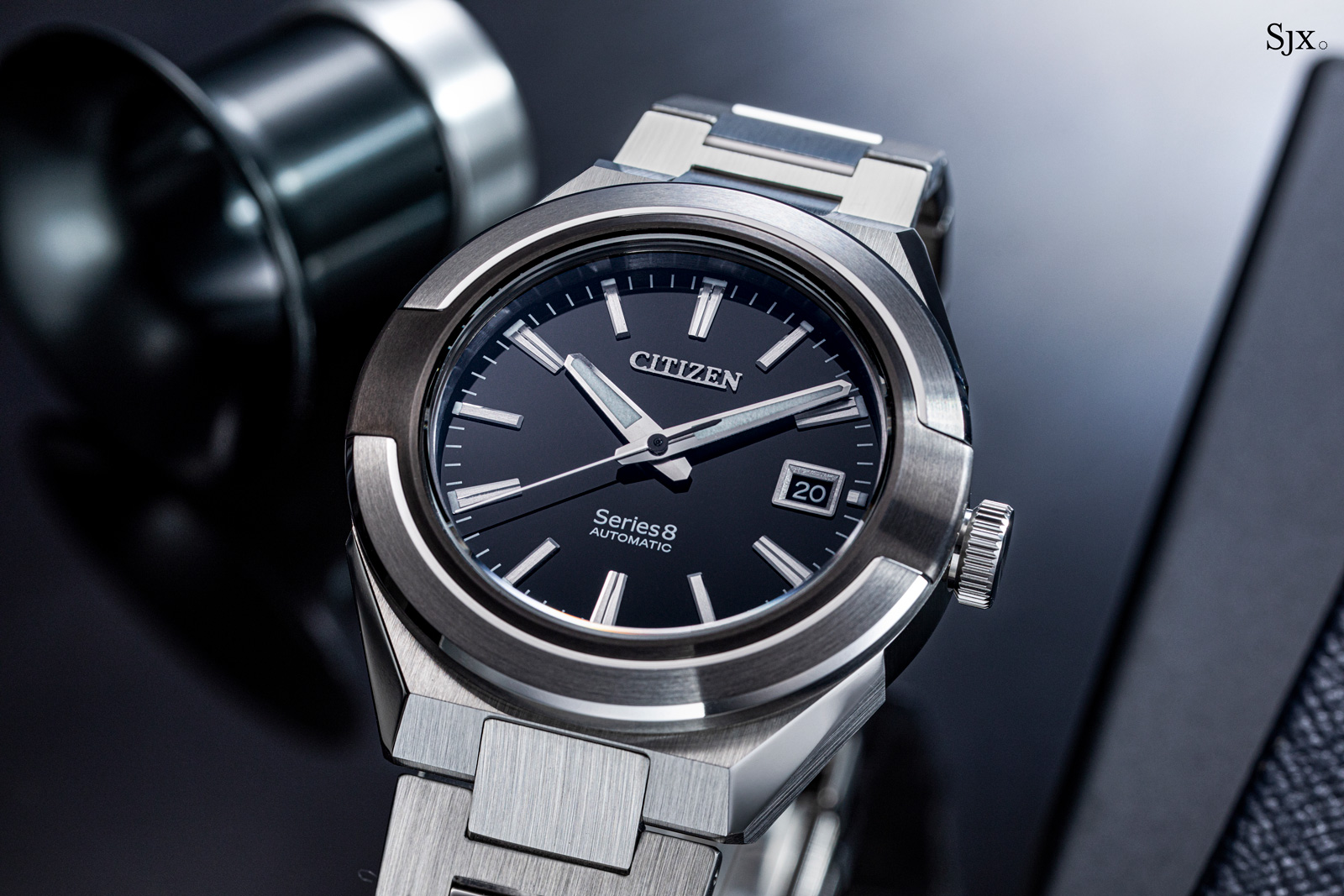
Initial thoughts
The Series 8 watches are all excellent at their respective price points, but the 870 impressed me the most – it’s the most expensive but paradoxically the best value.
Admittedly, the 870 is yet another sports watch with an integrated bracelet. The familiarity of the concept makes it more difficult for a new entrant to succeed.
One benchmark for success in this category is design – the watch has to look good while avoiding being derivative. And another is competitive pricing, since most fresh arrivals in the space can’t compete with the establishment names at the same price for lack of brand recognition. On both counts the 870 succeeds.
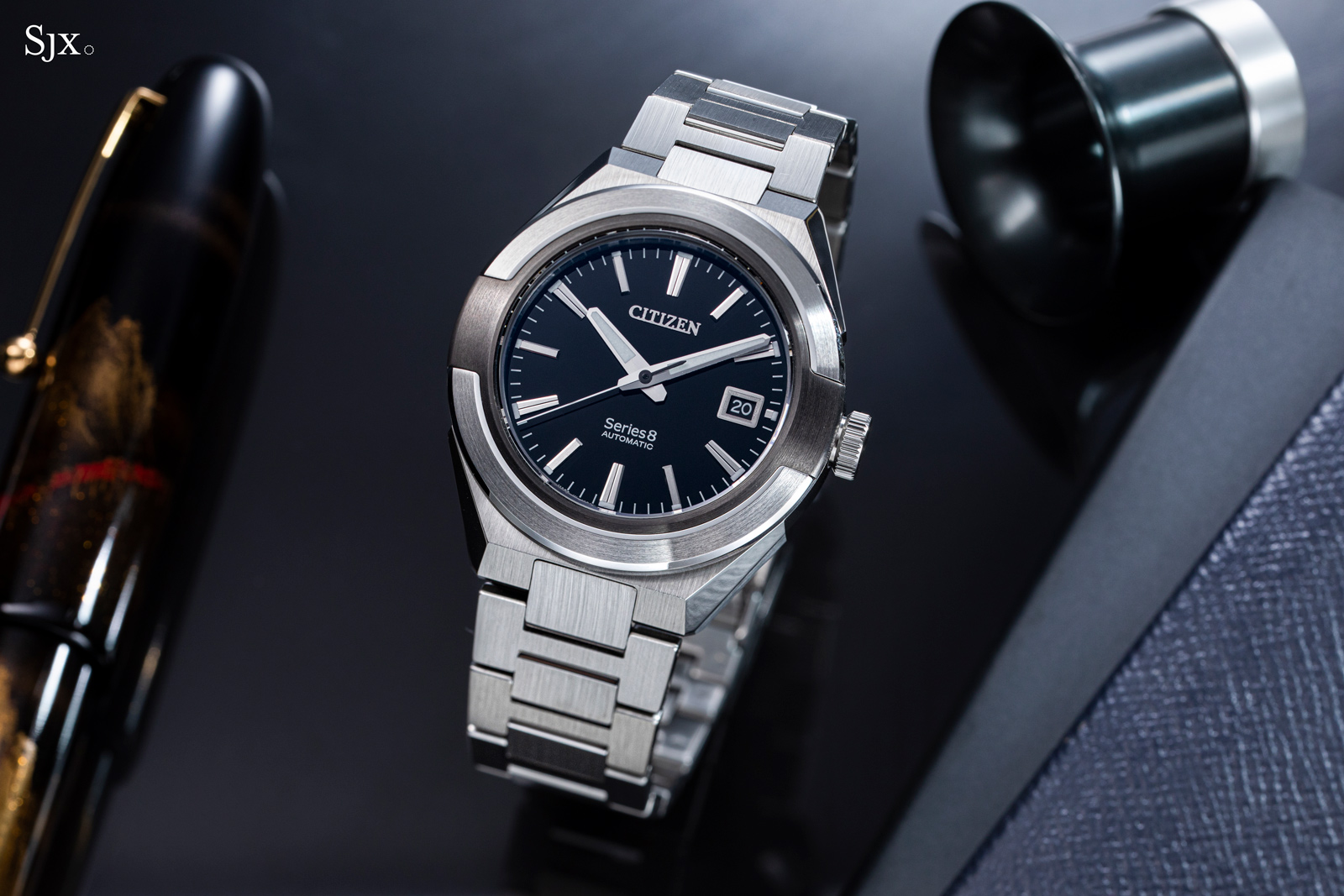
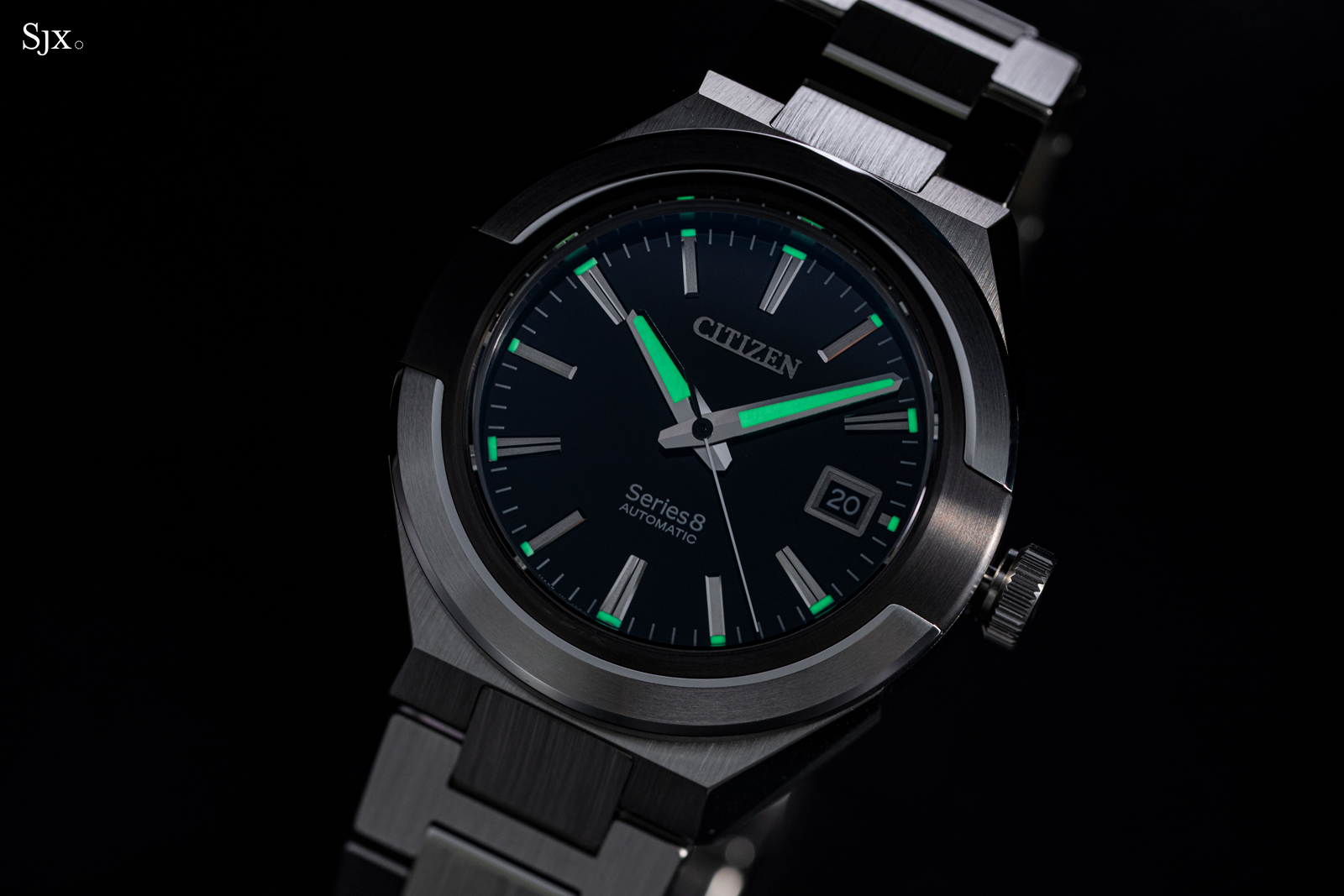
The 870 has a simple, almost fuss-free, style that’s still distinctive. But its visual appeal also lies in the evidently high-quality finish of the case and bracelet (as it is with the Caliber 0200, making this somewhat of an affordable take on the same idea).
In terms of design, the 870 does a few things well.
Instead of an octagon or any other polygon, the 870 smartly sticks with a round bezel. Instead it relies on a contrast-colour steel insert to make the bezel a bit more interesting. The insert gives the bezel “ears”, but because the form is round, the “ears” don’t evoke other nautically-inspired sports watches with protruding “ears” – a major pitfall avoided.
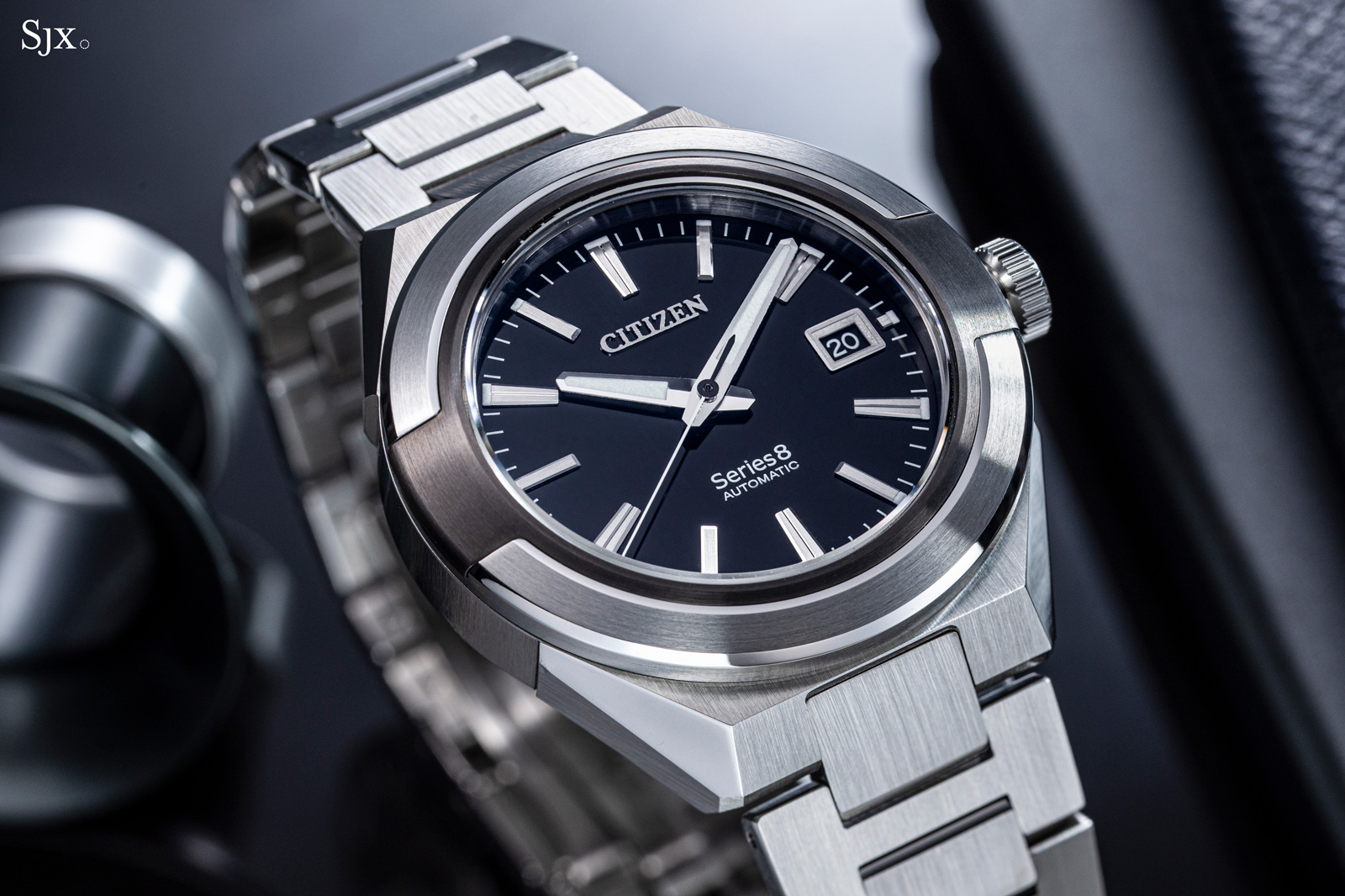
In tangible terms, the 870’s best feature is the quality-to-price ratio. The case and bracelet are executed usually well for watch that costs US$2,000. The bezel itself is impressive: the steel portion has four planes with alternating brushed and polished finishing.
As the Caliber 0200 easily claims the best-finished case and bracelet in the US$6,000 category, the 870 is likely the best in its price segment.
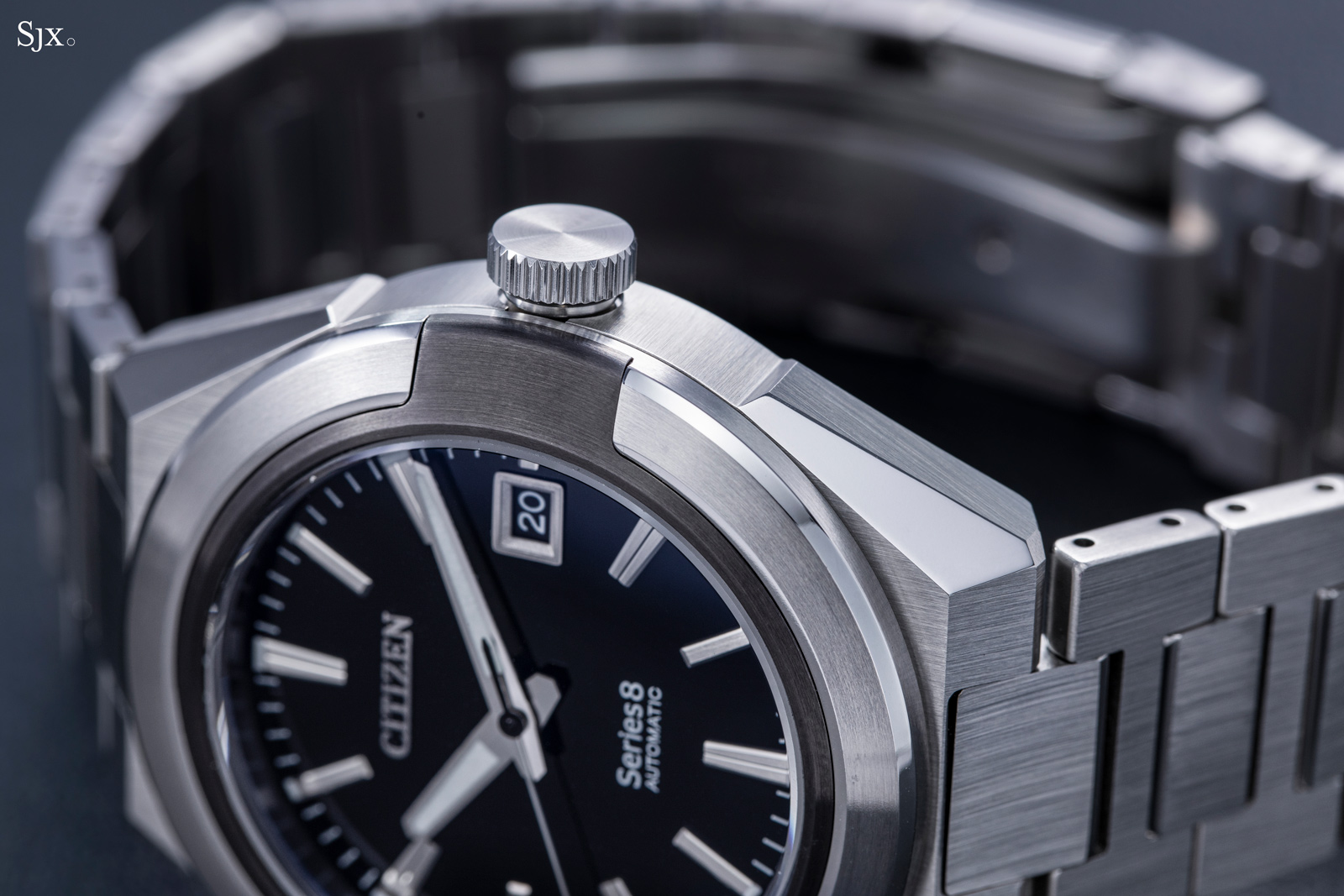
830 and 831
Before I delve into the details of the 870, I want to take a brief look at the 830 because Citizen also loaned me an example.
Essentially the same watch but with a different dials and movements, the 830 and 831 are more affordable than the 870. The 830 costs US$1,800, while the 831 is US$1,200.
Both share the same case and bracelet, but the 830 has a fancier, multi-layer dial with mother of pearl visible through latticework, while the 831 is the entry-level model with a unadorned dial and lower-spec movement.
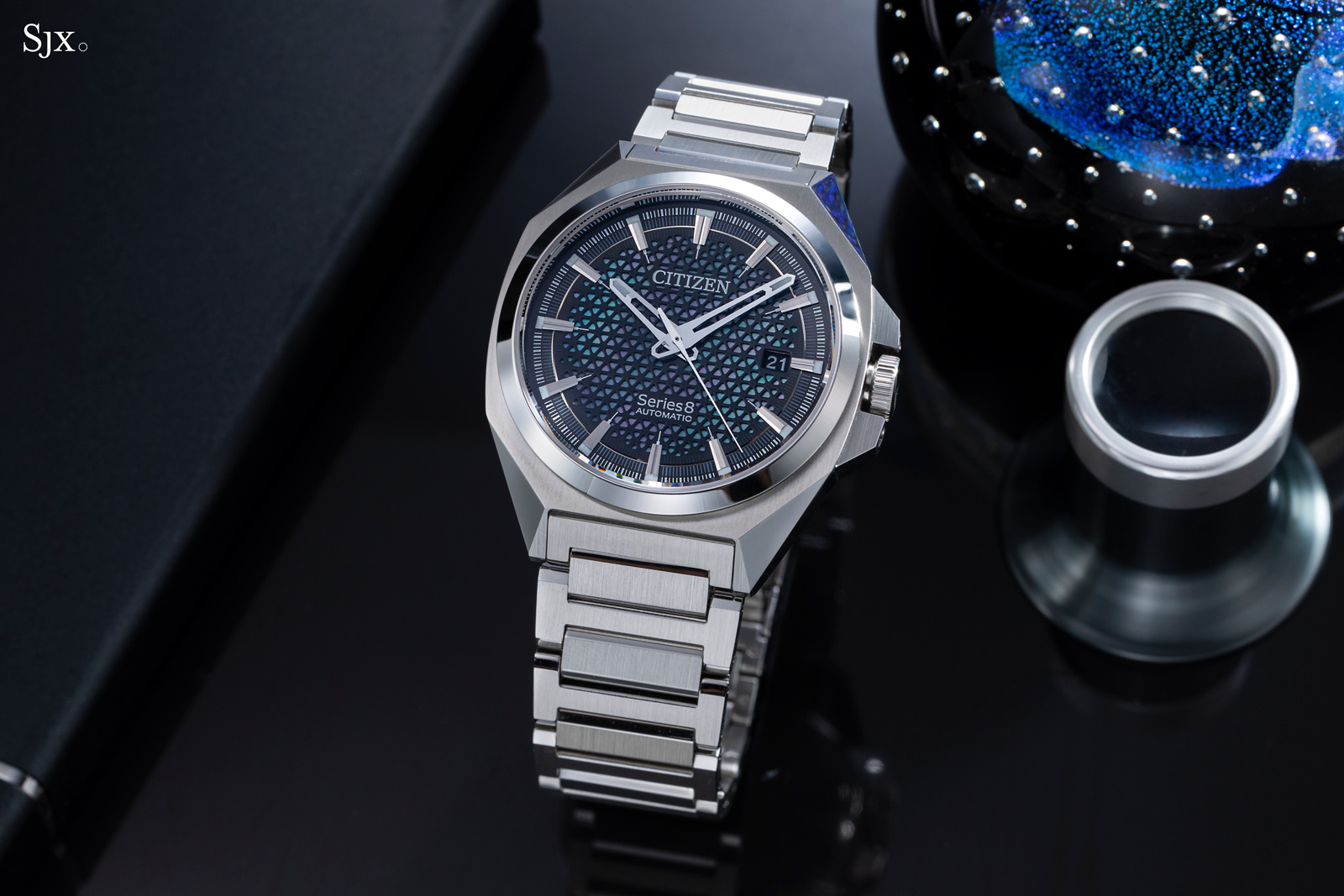
The 830 with its latticework dial
At the distance, the 830 looks like the most elaborate model amongst the Series 8 models because of the dial. It’s comprised of three layers – a metal base (probably brass), followed by a mother-of-pearl disc, and finally the open-worked lattice on top that reveals the iridescent pearl below.
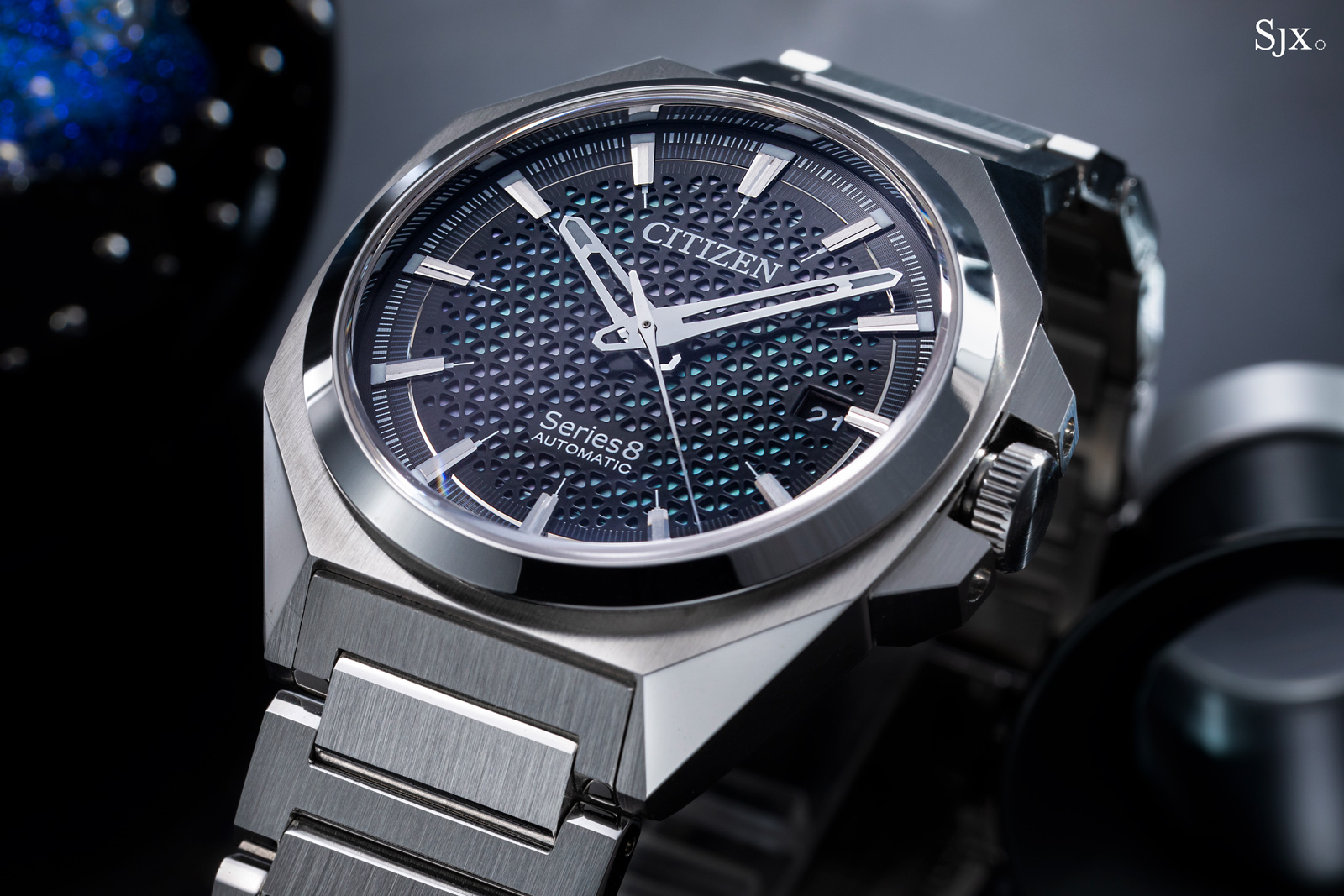
The visual complexity continues on the rest of the dial. It has a triple seconds scale on its perimeter, with hashmarks that fade towards the centre, along with open worked hands. Even the hour markers have tiny luminous extensions at their base. All the activity on the dial feels makes it feel a bit frenzied.
That said, the lattice does feel uniquely Japanese, giving the watch a distinctive flavour. In fact, the triangular pattern is inspired by Uroko, or “scales”, a motif often found on fabric that is believed to repel bad luck.
The case, on the other hand, is cleaner in form. It’s characterised by wide, flat planes that give it an angular, slightly 1970s look.
That, along with the crown guards, make it seem larger than that case of the 870. The case finishing, however, isn’t quite to the level of the 870’s case.
Unique by virtue of its latticework dial, the 830 is too much in terms of design for a sleek sports watch. Still, the 830 is as much of a value buy as the 870 is in its segment.
The facets of the 870
Back to the 870.
By keeping it simple, the 870 maintains a trim profile and outline. The lines of the case are clean, but details in terms of finishing and surfaces are visible up close.

Importantly, it’s 10.9 mm high, which is still thin enough to give it a thin profile on the wrist. The height, combined with the 40 mm, gives the watch a just-nice fit on the wrist.
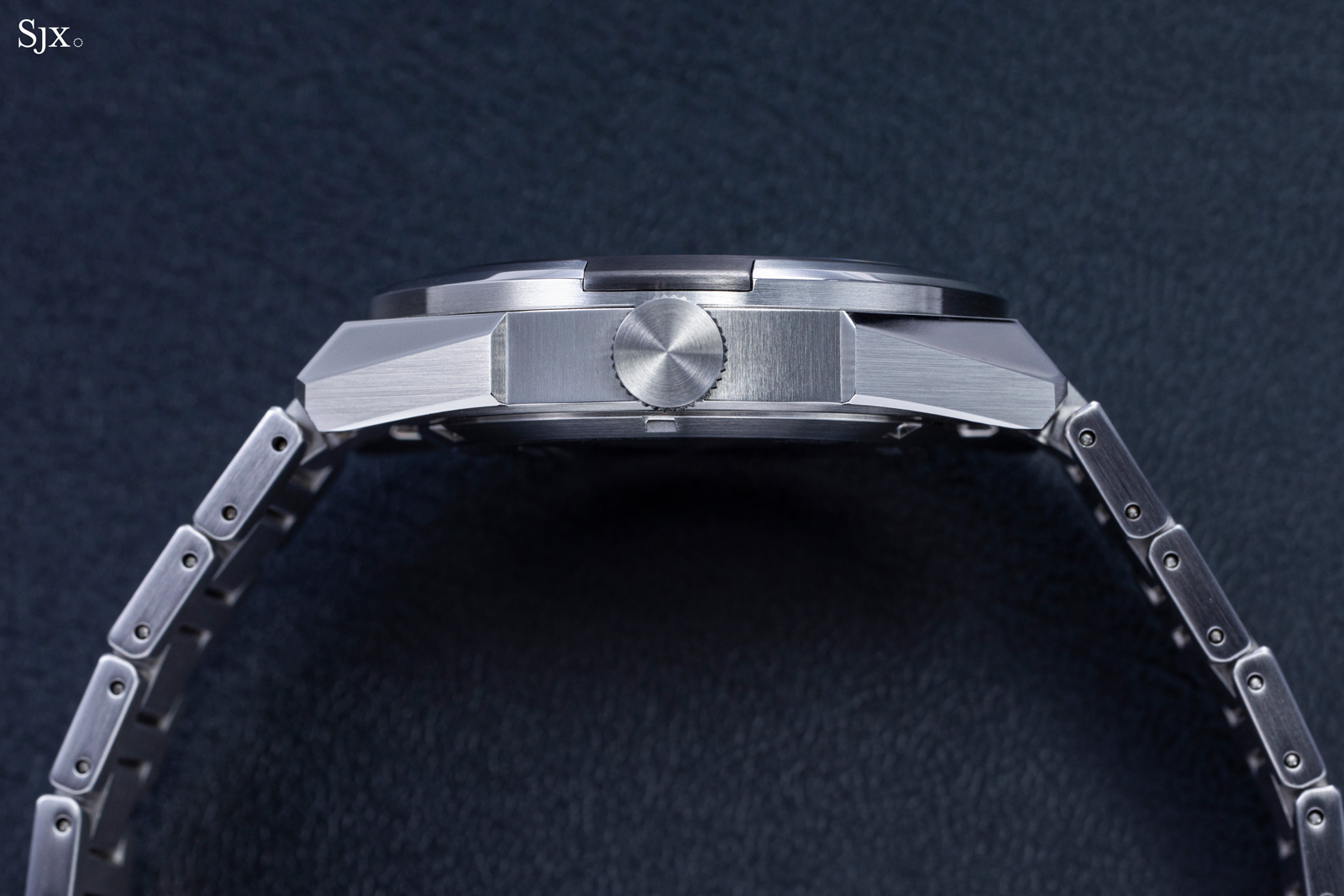
Like many modern-day sports watches, the 870’s case is composed of multiple, flat planes. Most of them are brushed, but the case sides are highlight by a wide, polished bevel that widens towards the bracelet.
The case stands out for its finishing. The way its alternating brushed and polished surfaces catch the light give the 870 an air of refinement that’s more than typical for a watch of this price.
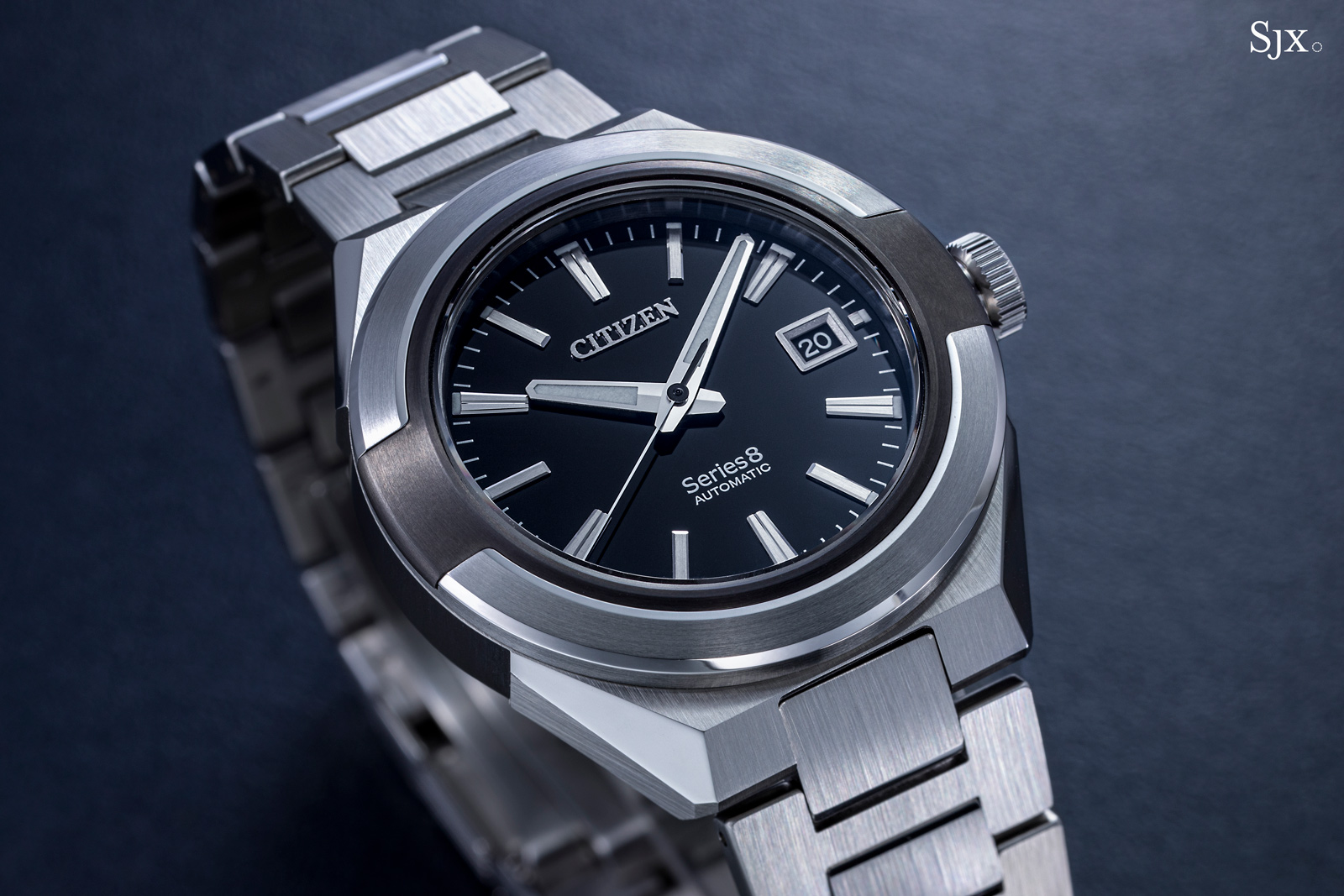
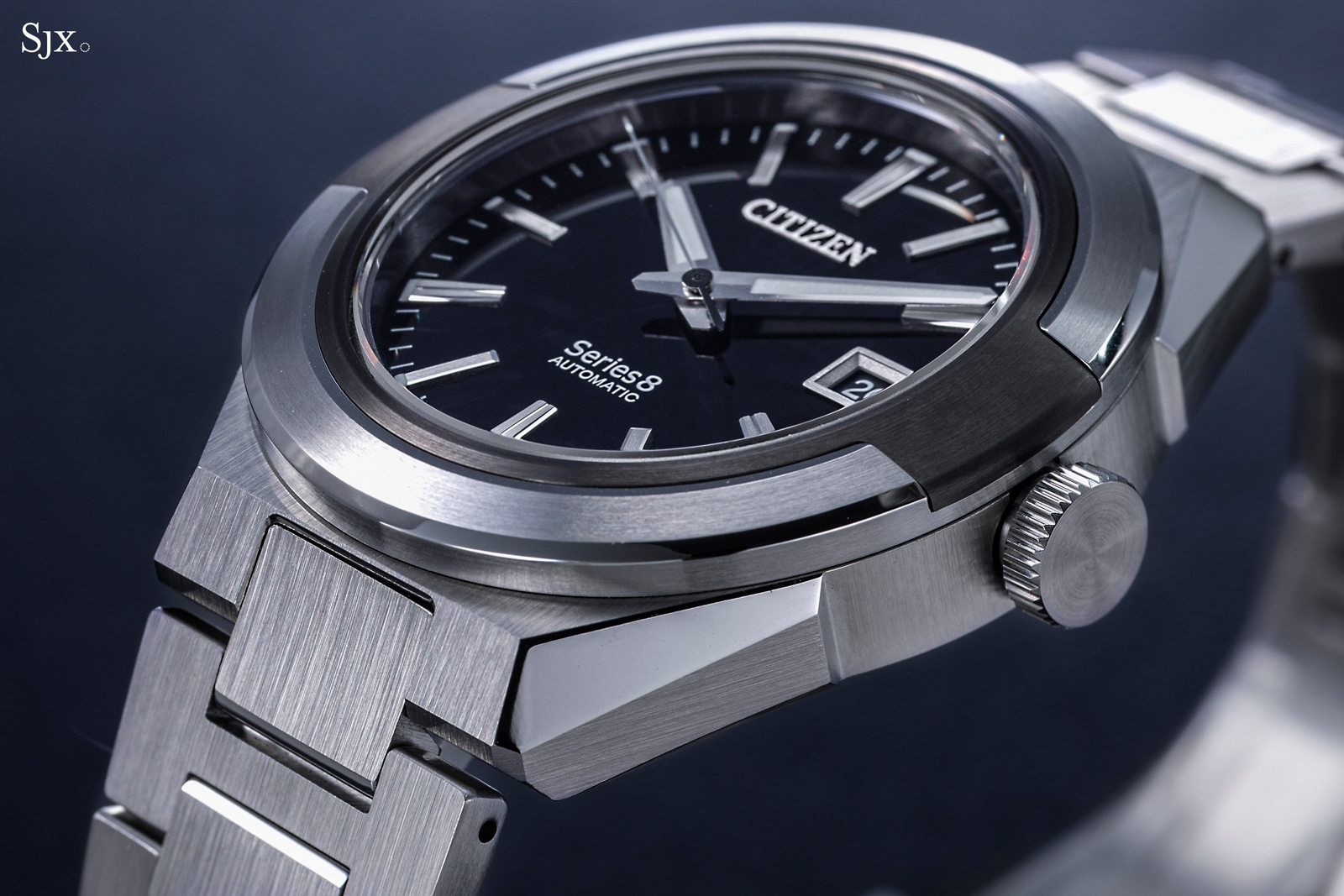
The neatness and precision of the brushed surfaces is first-rate. Although the surfaces are substantial, it appear extremely flat, with no surface distortion visible even up close, indicating an unusually high-quality finish.
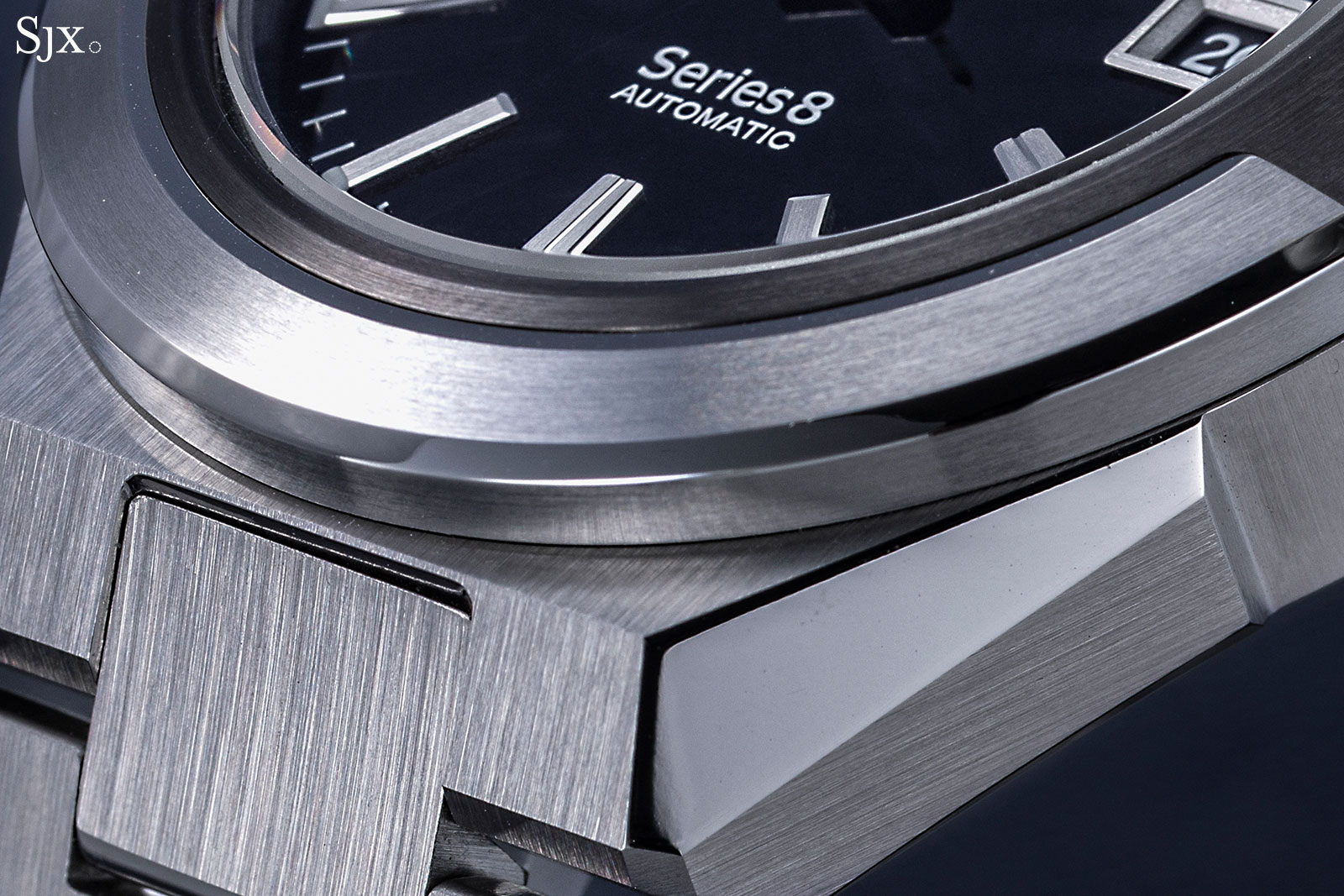
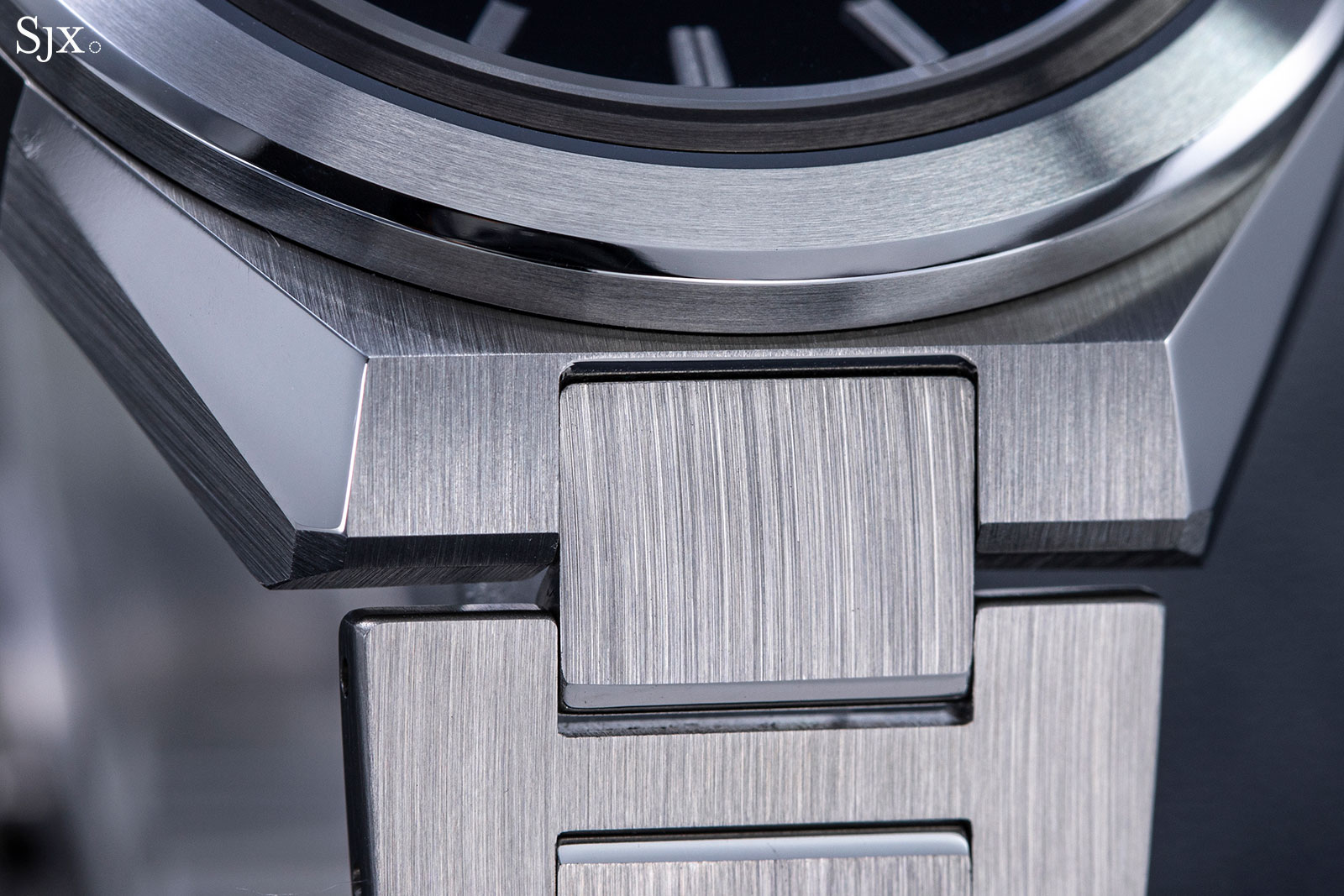
Another detail that reveals the precision of the case work is the bezel. The two components of the bezel fit together almost seamlessly, with only the smallest of gaps visible at high magnification. More notable is the finish of the bezel – four planes that alternate between concentric brushing and mirror polishing.
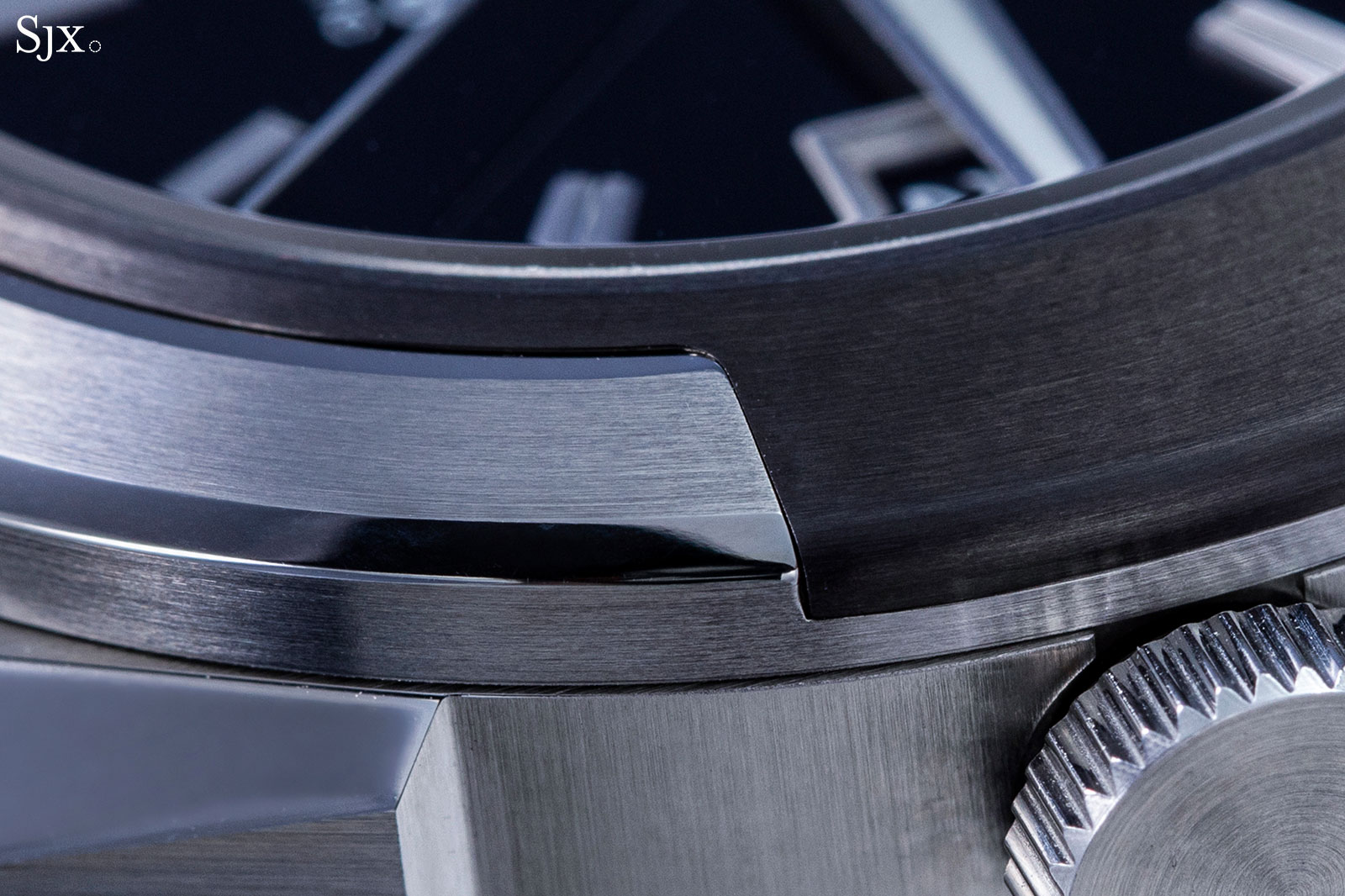
Brushed side, polished bevel, brushed top, and polished innermost bevel
The only bit of the case that feels naked is the crown. It’s usefully large and flat enough to be unobtrusive. But it’s plain on top; a relief or engraved emblem would have been an attractive little bonus.
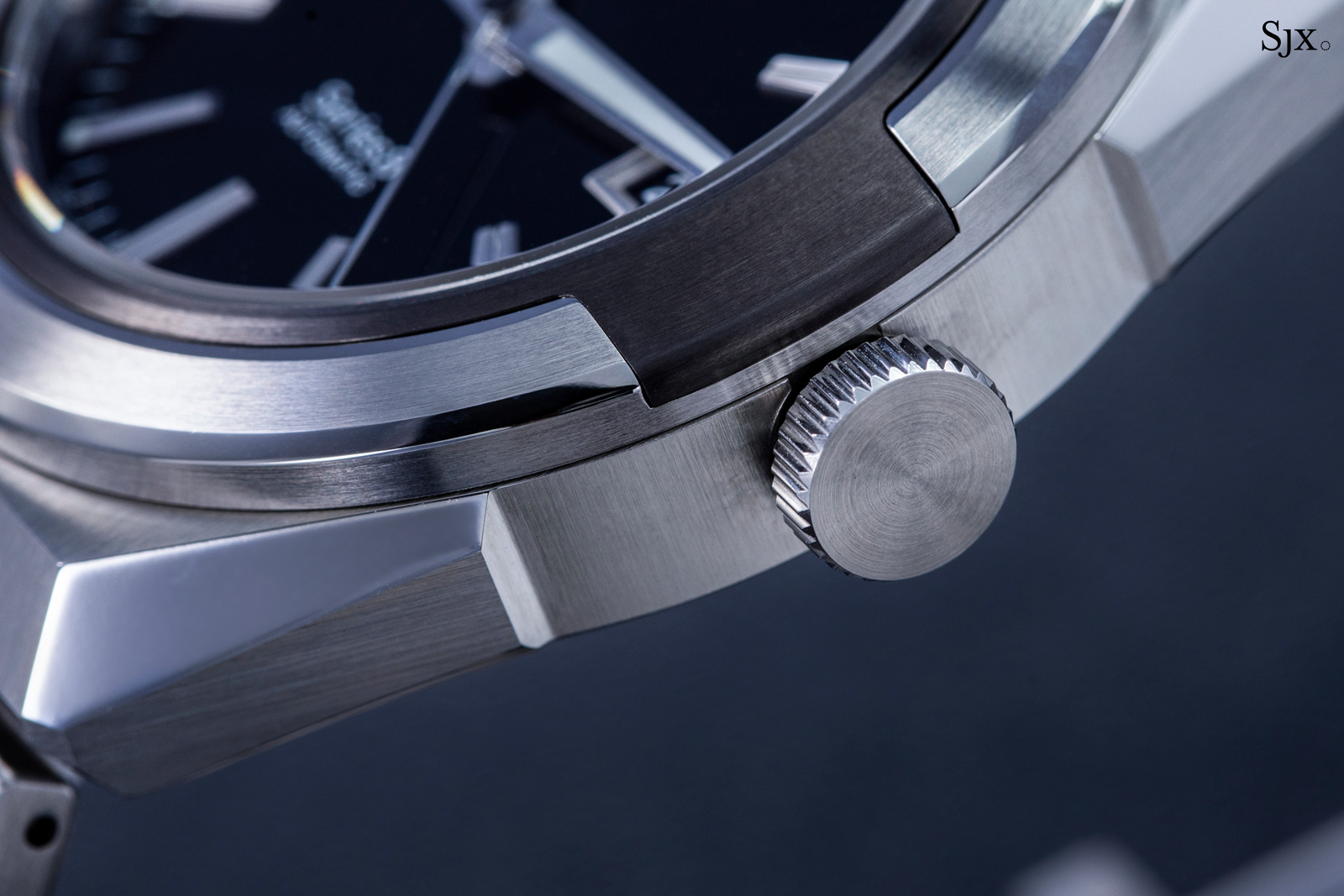
Bracelet
The bracelet matches the finishing of the case, showing the same neat, flat brushing.
At the same time, the bracelet is just nice relative to the case – the links are just the right thickness and length, resulting in good visual parity between the two.
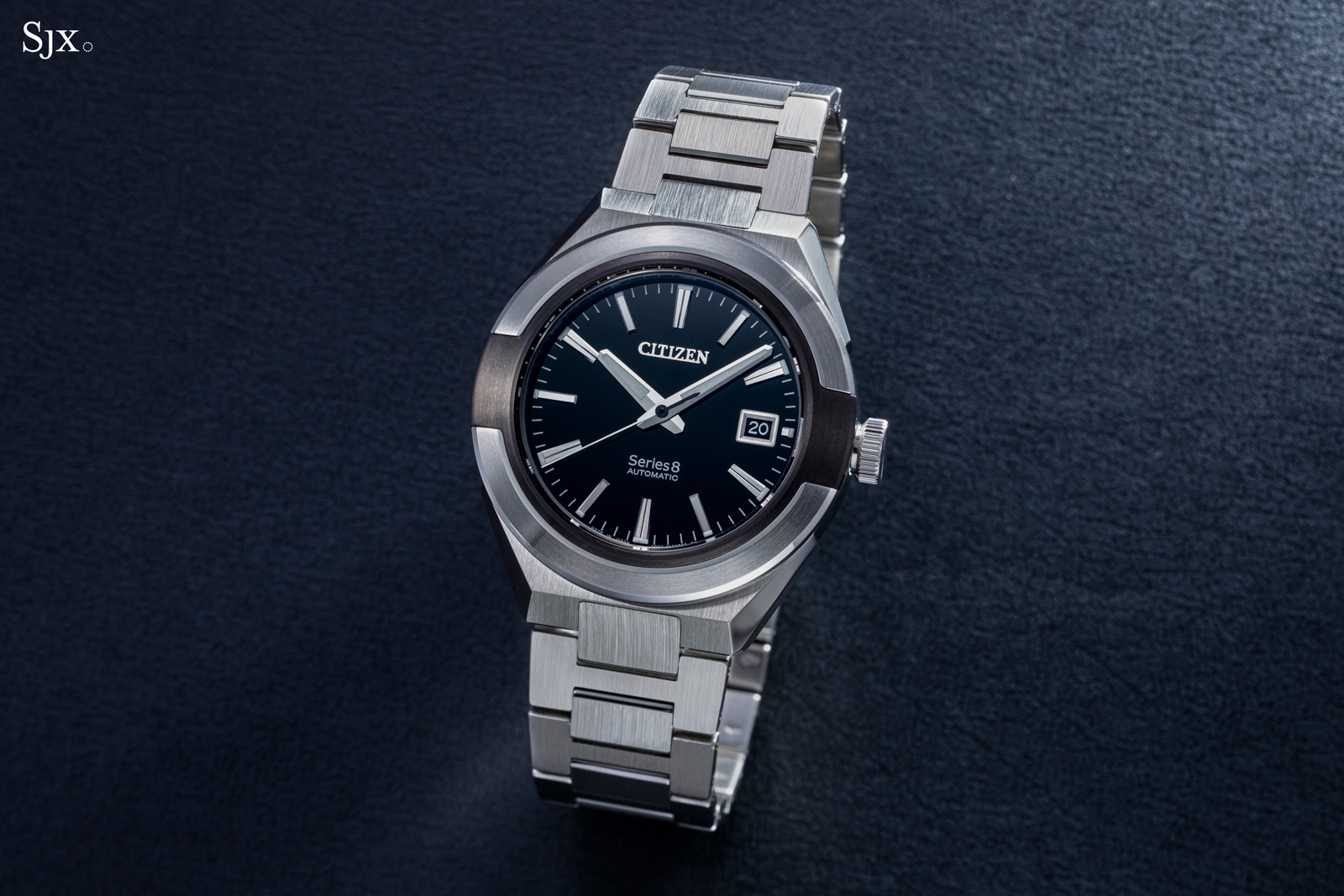
Although the twin pushbutton clasp functions perfectly, it could do with a better design. As it is, the clasp breaks up the flow of the bracelet; a clasp that continued the style of the links would have been ideal.
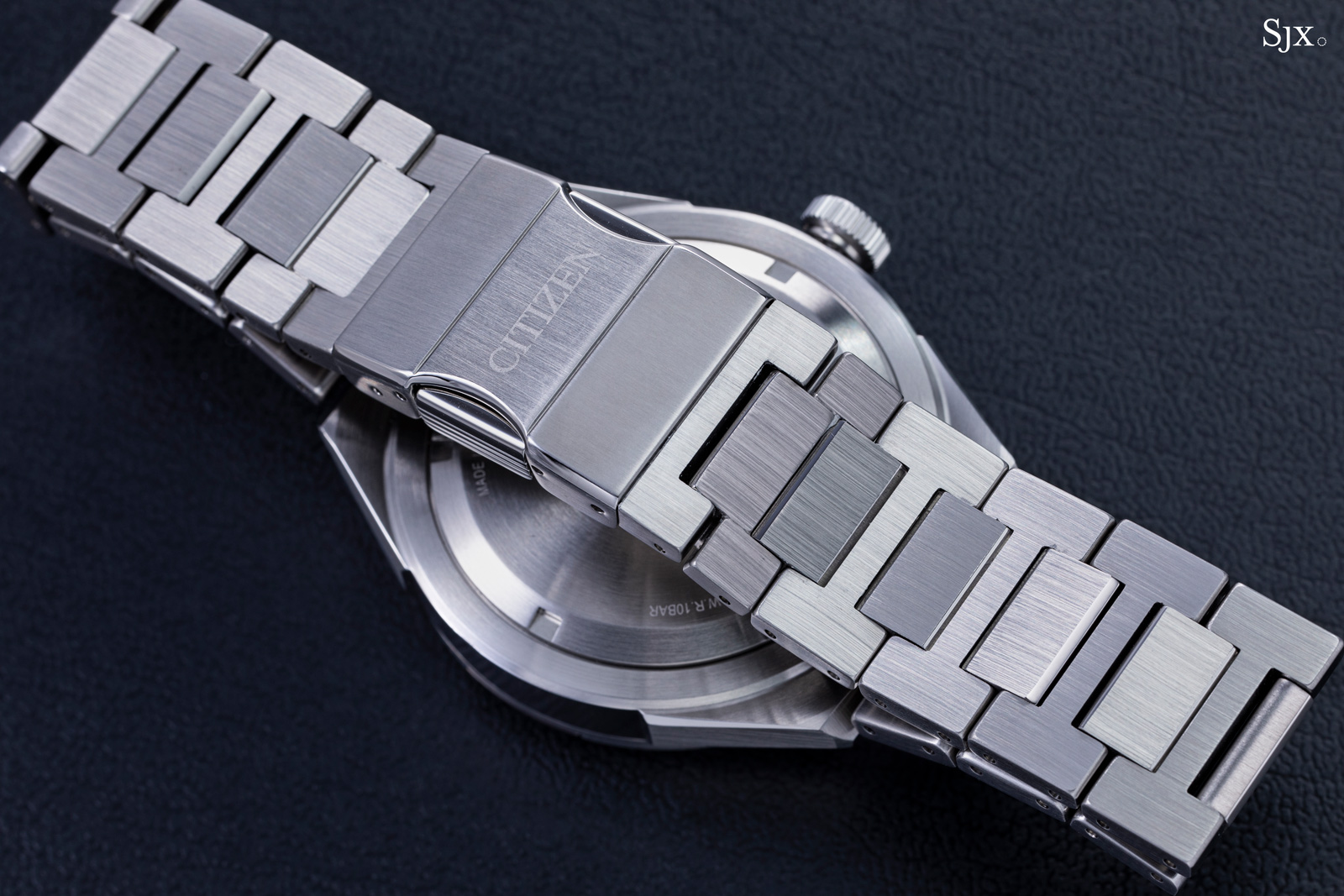
The clasp lacks a micro-adjustment feature due to its design, but the bracelet helpfully includes half links on each side of the clasp
Interestingly, it is the underside of the bracelet that proves the quality of the finish on its outer surfaces. The difference insurface flatness and grain of the brushing between the front and back of the links is apparent even to the naked eye. The undersides of the links have a rougher brushing, with the surfaces being slightly convex, which results from the stamping that produces each link.
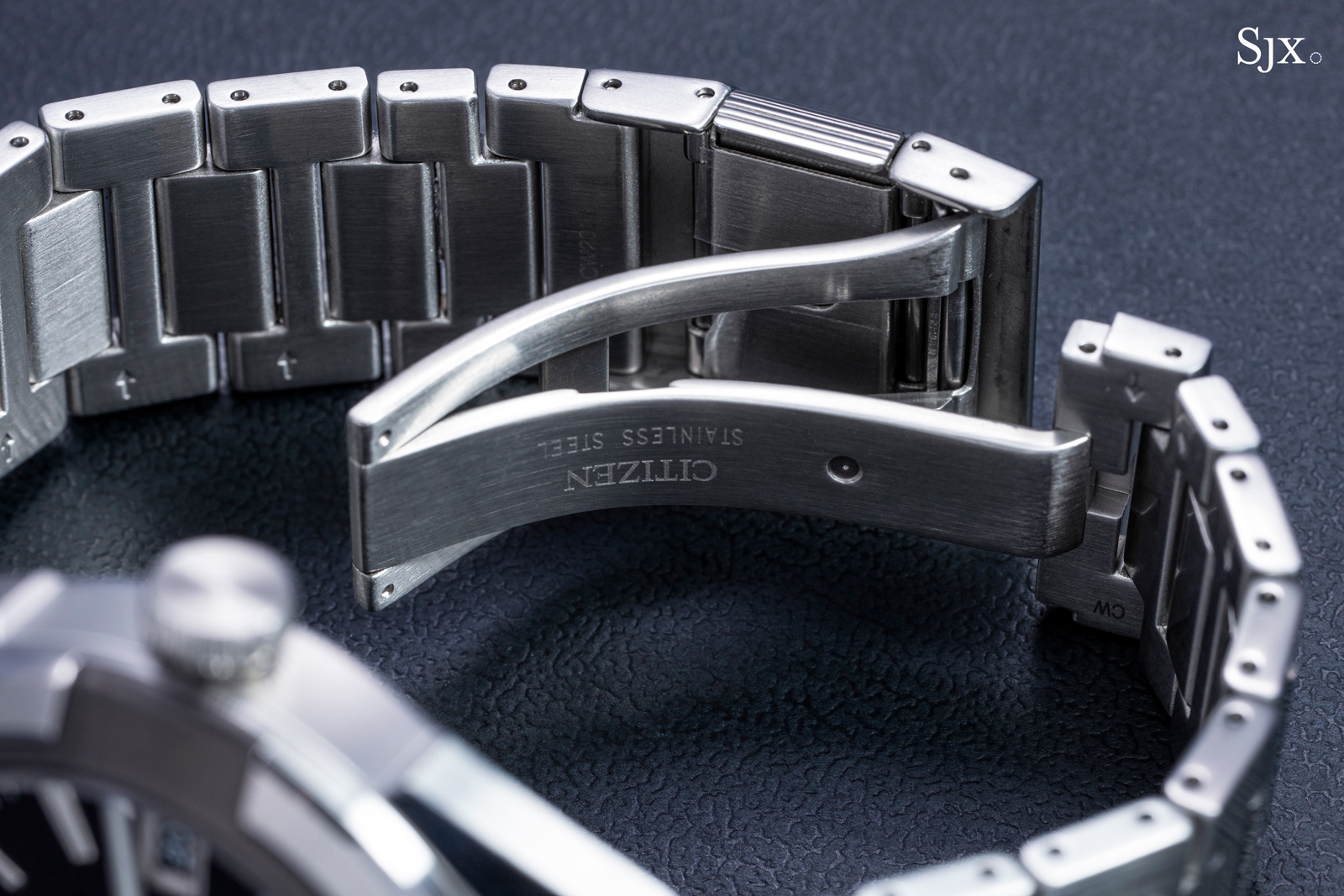
Instead of stamped metal, the twin blades of the folding clasp are surprisingly substantial
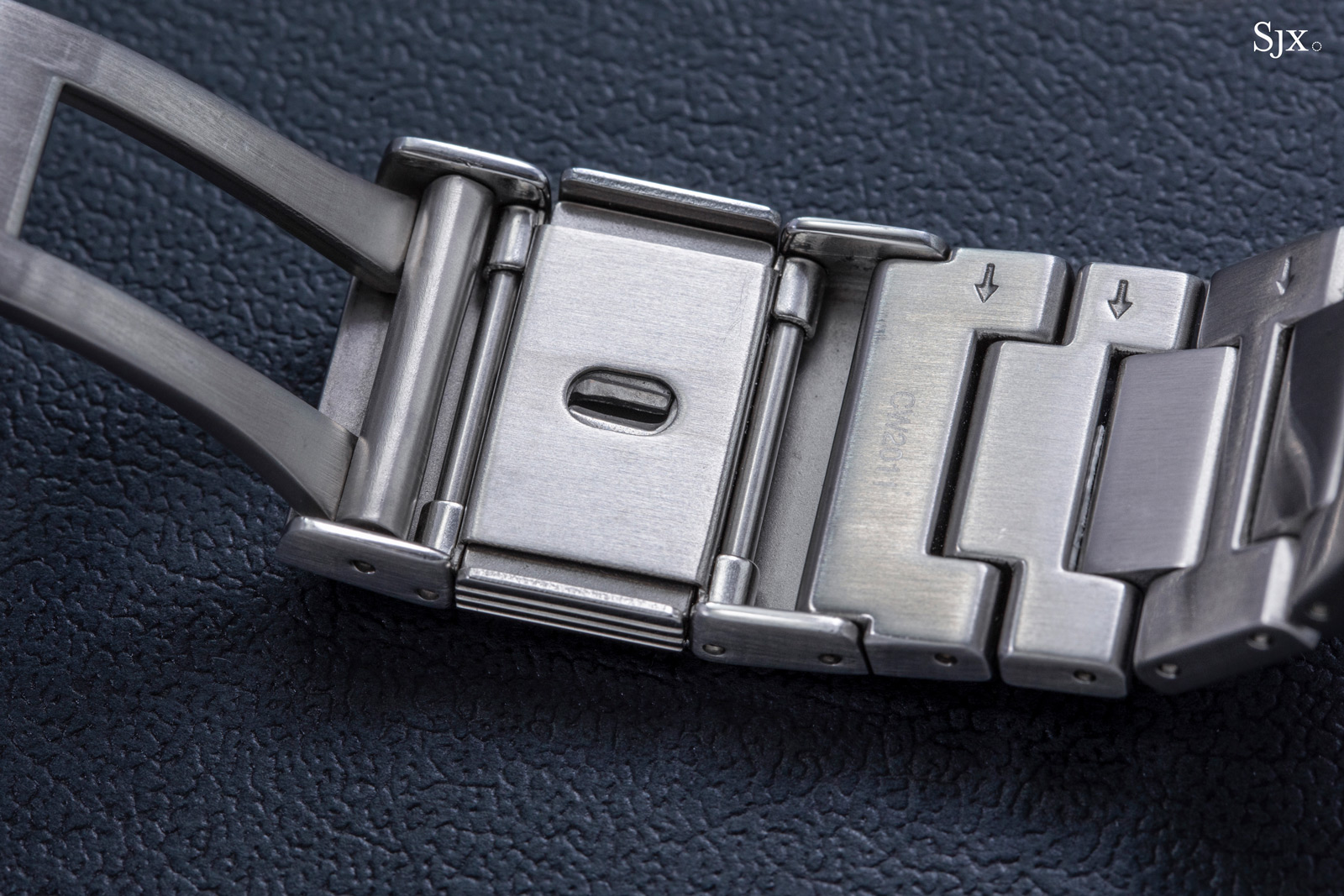
The links are secured by friction-fit pins, a low-tech but effective solution
Mechanics
Inside the 870 (and also the 830) is the cal. 0950. It’s an automatic movement that’s part of the 90-series of movements; another calibre from the family is found in the recent Promaster Mechanical Diver.
Conceived as a slim-ish but robust movement, the cal. 0950 is 4.1 mm high, making it slimmer than an ETA 2824 but slightly thicker than the ETA 2892, the de facto calibre for affordable, thin Swiss watches.
The cal. 0950 has a decent enough 50-hour power reserve, though the latest-generation movements found in comparably priced Swiss and Japanese watches are usually now 70 hours.
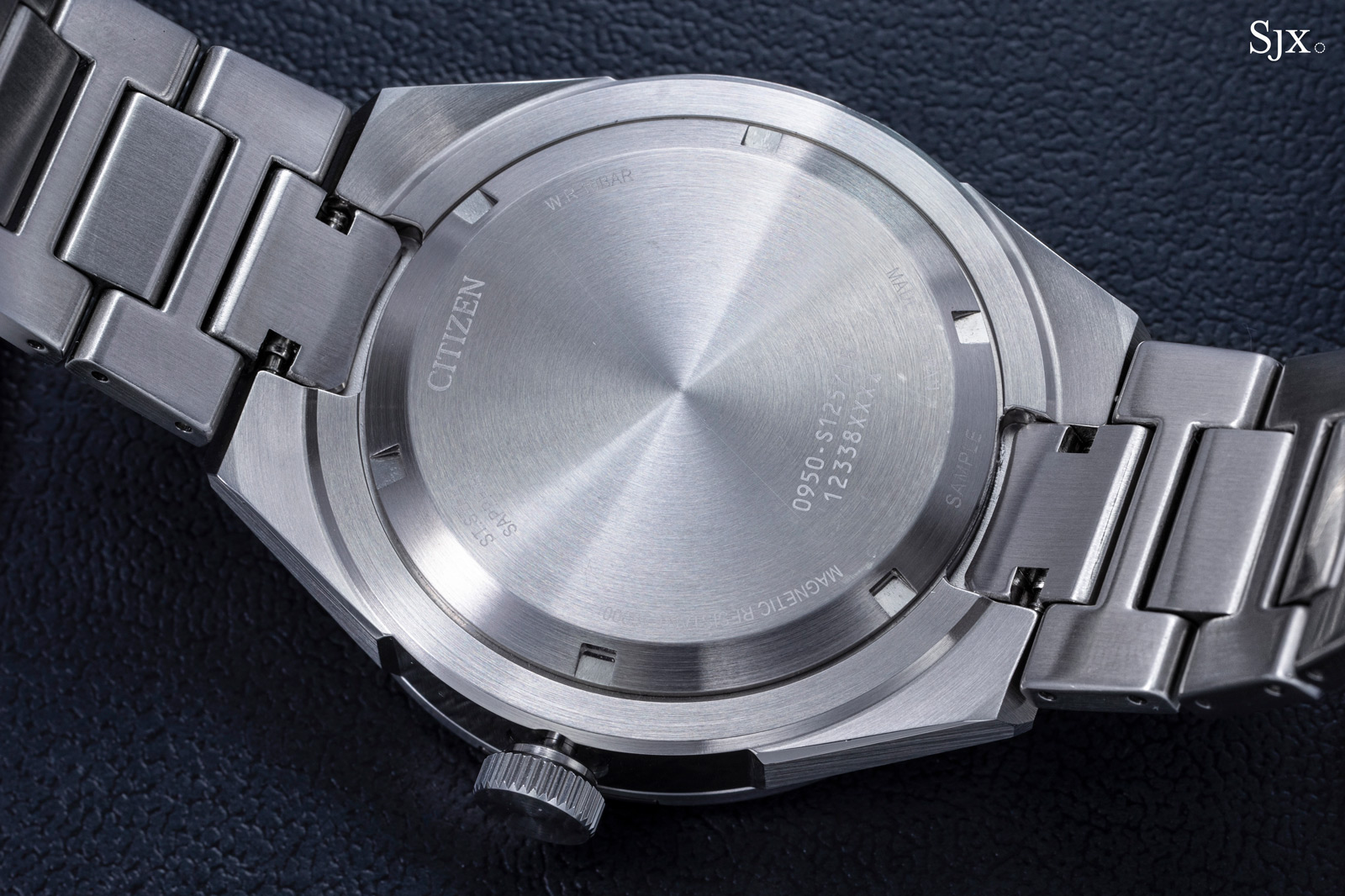
The movement is hidden under a solid back
That said, the cal. 0950 has a surprising feature – the hairspring and escapement components are fabricated from non-magnetic alloys, a rarity in an affordable watch like this. Consequently, the cal. 0950 meets the requirements for a “magnetic-resistant portable watch” described in JIS B 7024 laid out by the Japan’s national industrial standards body.
Specifically, the movement qualifies for the more stringent Type 2 magnetism-resistance rating of at least 16,000 A/m. That’s about three times the norm for mechanical watches of 4,800 A/m, and sufficient to withstand the magnetic fields generated by everyday items like smartphones and tablets.
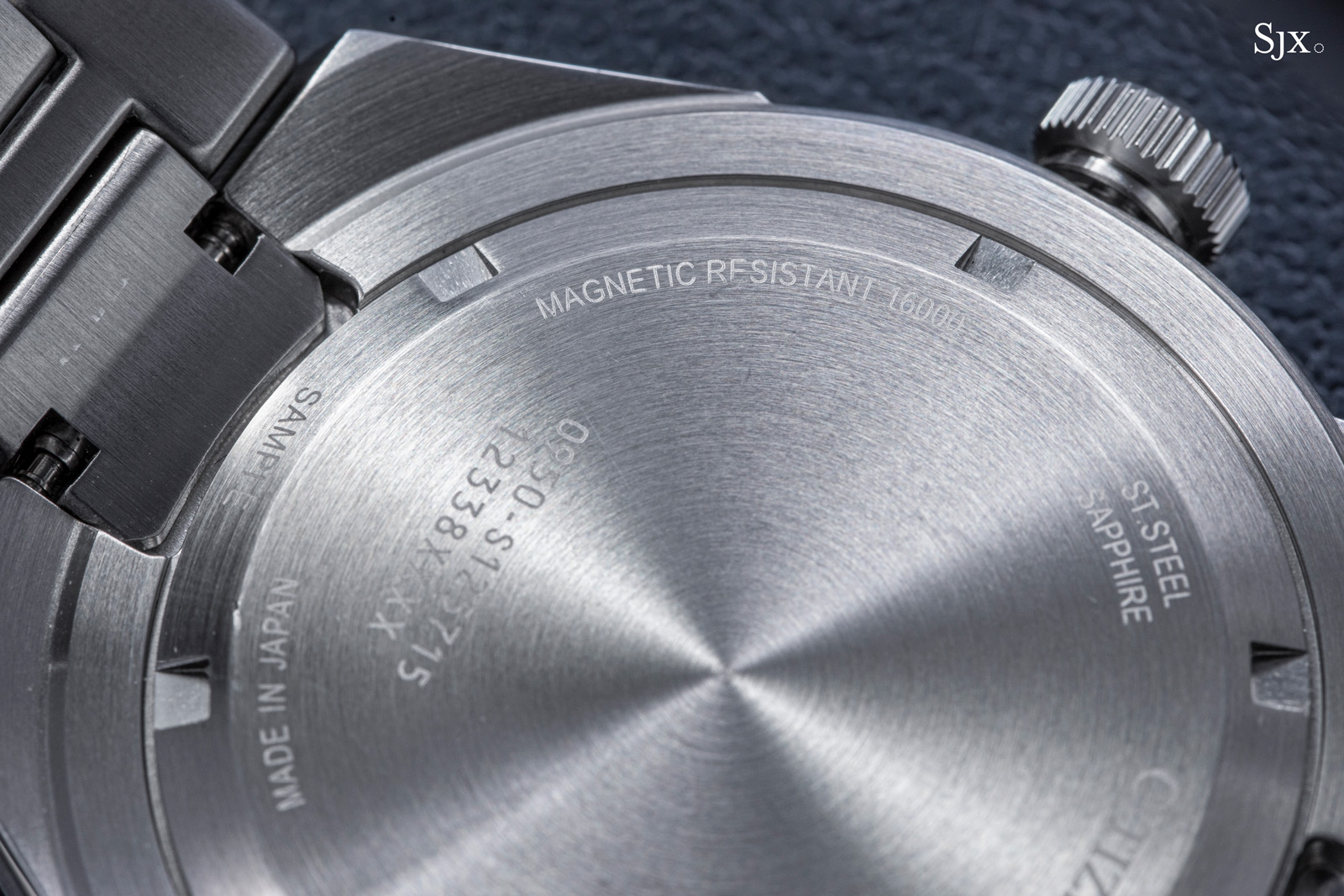
The face
Unlike the 830 with its mother-of-pearl dial, the 870 is legible and no frills. Even the seemingly superfluous Series 8 branding at six o’clock serves to balance the large logo under 12 o’clock.
Though the dial is simple, the individual elements are all executed well. The surface is a glossy, black lacquer with applied hour markers that are brushed on top but feature diamond-cut edges, giving them a mirrored bevel along each edge. They are matched with comparatively plainer hands that are stamped but nonetheless look good.
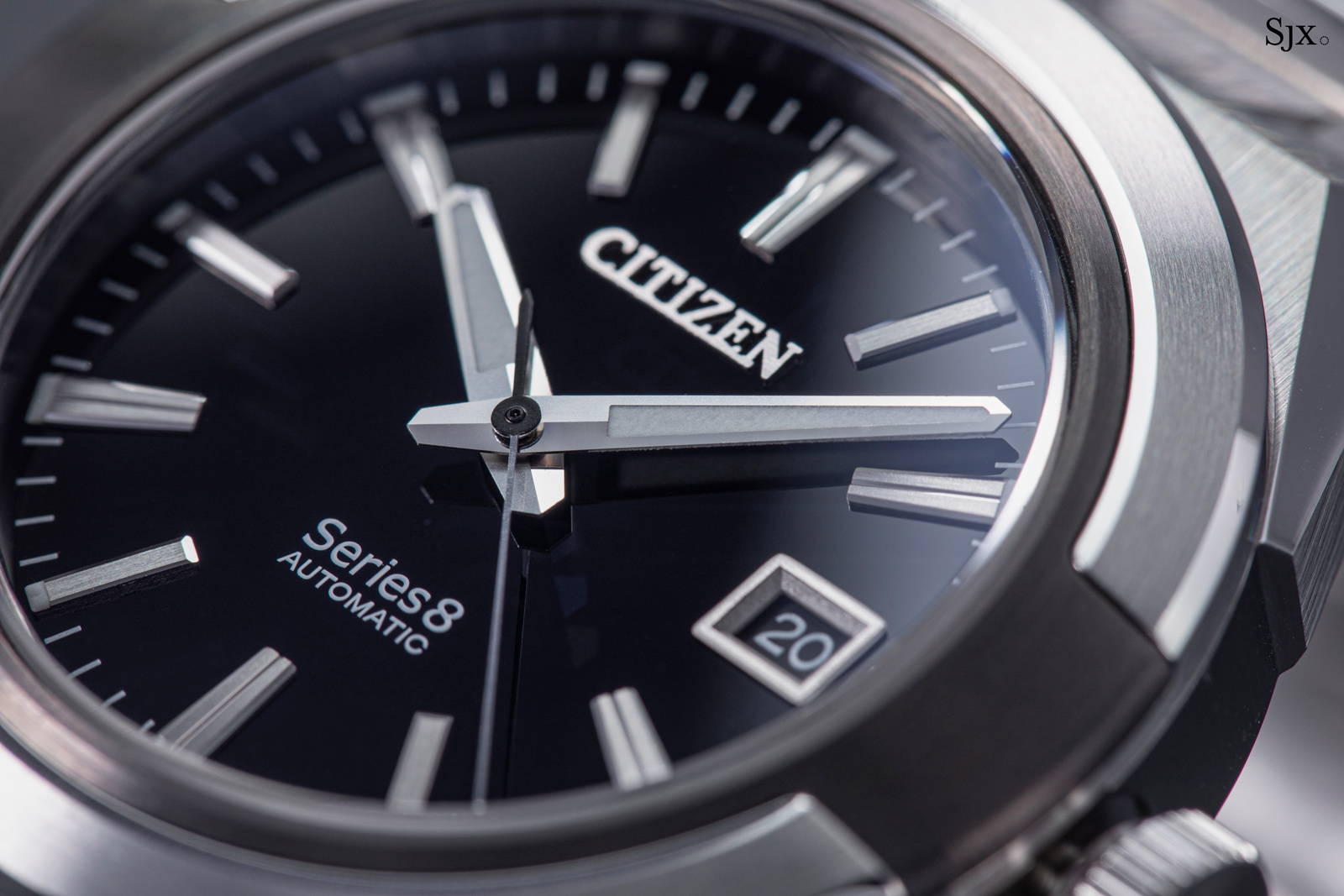
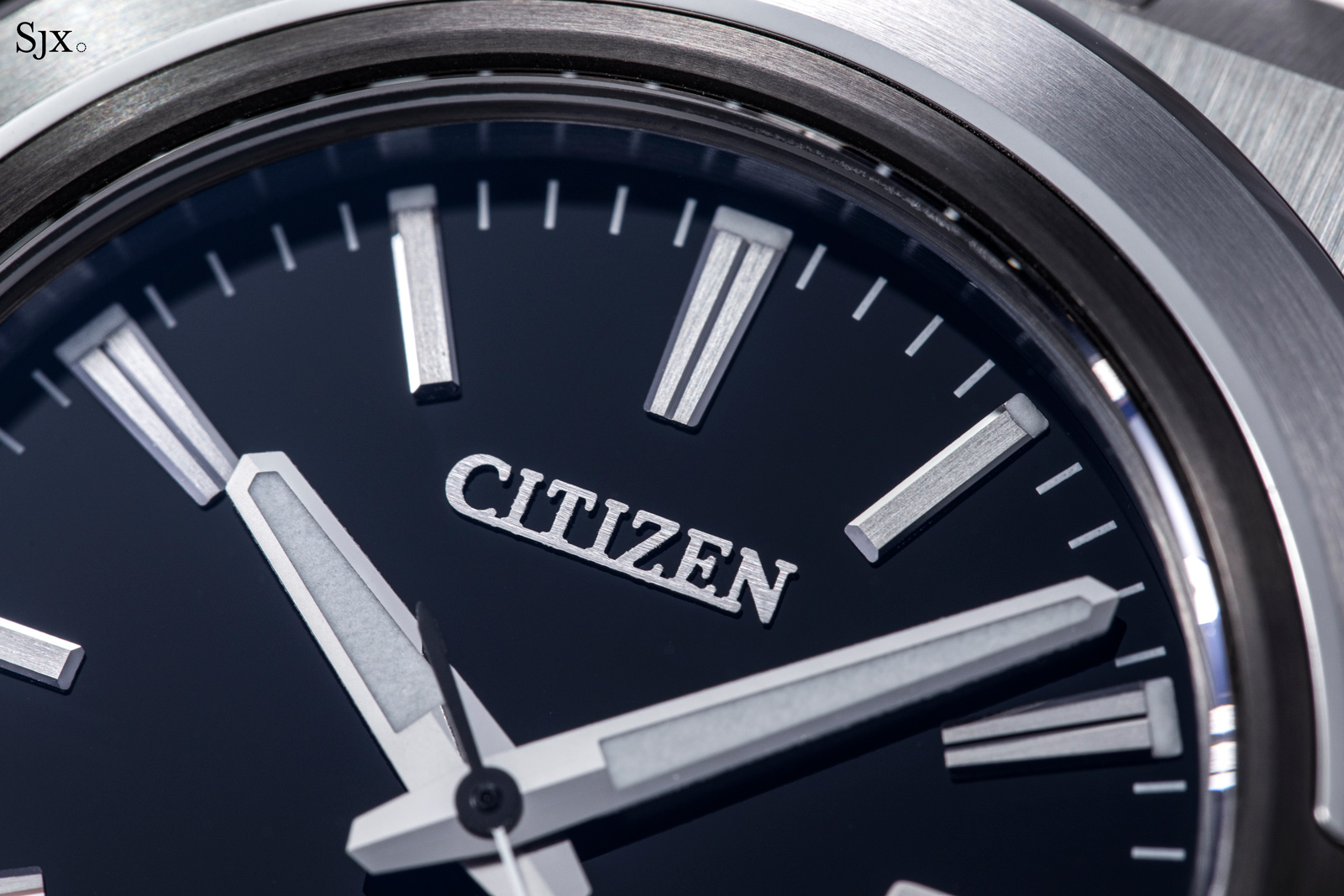
In contrast to the impeccably milled emblem found on the far pricier Caliber 0200, the logo here is slightly fuzzy around its edges
Two details on the dial are worth pointing out. One is positive: the date. For one, the date disc matches the dial colour. At the same time, it is presented in an elaborate window that’s brushed, bevelled, and frosted.
The second detail is a criticism: “Series 8” should be entirely capitalised. The use of small letters throws off the formality of the design.
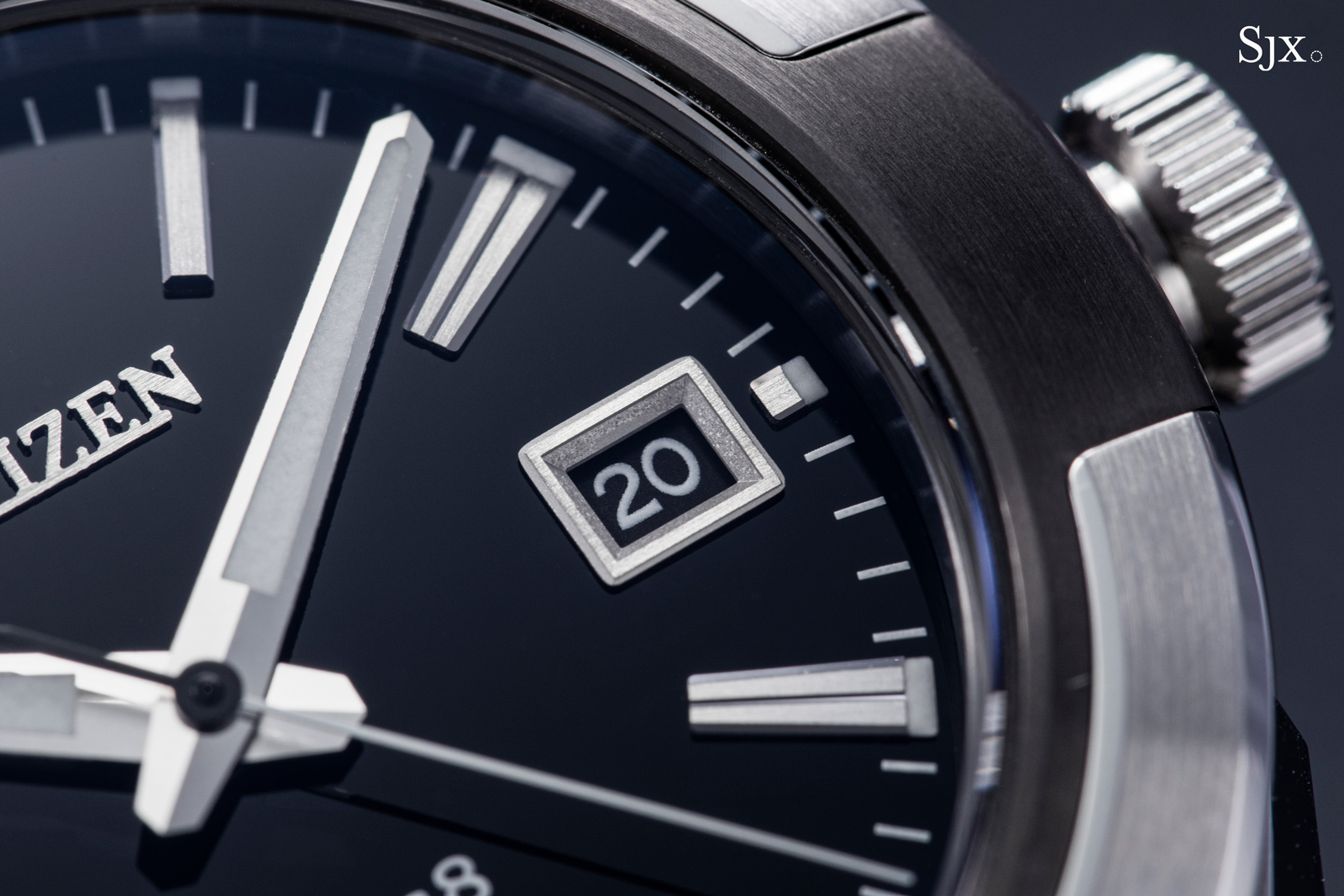
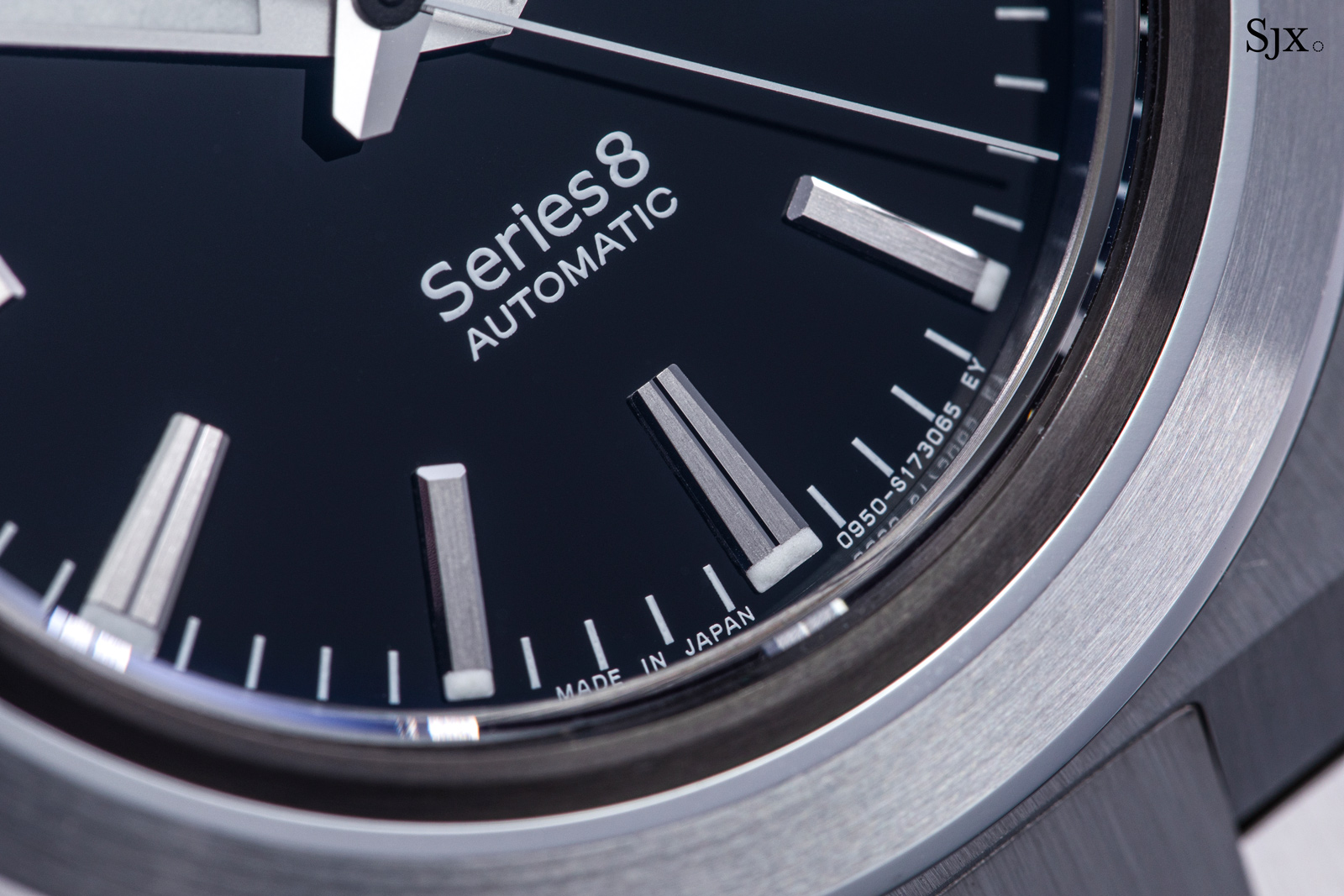
Concluding thoughts
All three versions of the Citizen Series 8 score highly at their respective price points, but the clear winner is the 870. It has the best design, not only aesthetically, but also in terms of finishing and details. In fact, the 870 looks and feels like a watch that costs more. It is more accomplished in fit and finish than majority of the competition in the same segment.
Key facts and price
Citizen Series 8
870 Mechanical (two-piece bezel)
830 Mechanical (mother-of-pearl dial)
Diameter: 40 mm
Height: 10.9 mm (870); 11.7 mm (830)
Material: Stainless steel
Crystal: Sapphire
Water resistance: 100 m
Movement: Cal. 0950
Features: Hours, minutes, seconds, and date
Frequency: 28,800 beats per hour (4 Hz)
Winding: Automatic
Power reserve: 50 hours
Strap: Steel bracelet
Availability: Now Citizen boutiques and retailers
Price:
870 – US$2000
830 – US$1,800 in steel; US$1,900 in grey-coated steel
For more, visit Citizenwatch-global.com.
Back to top.

